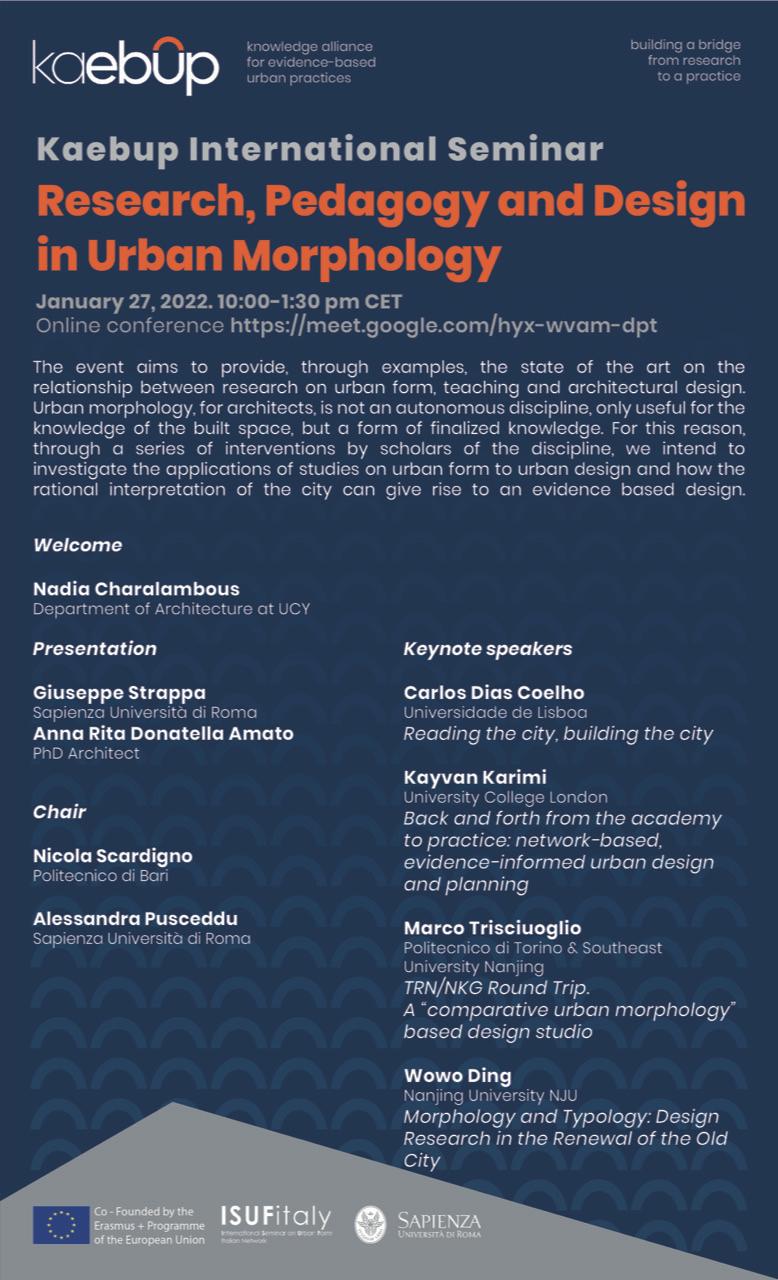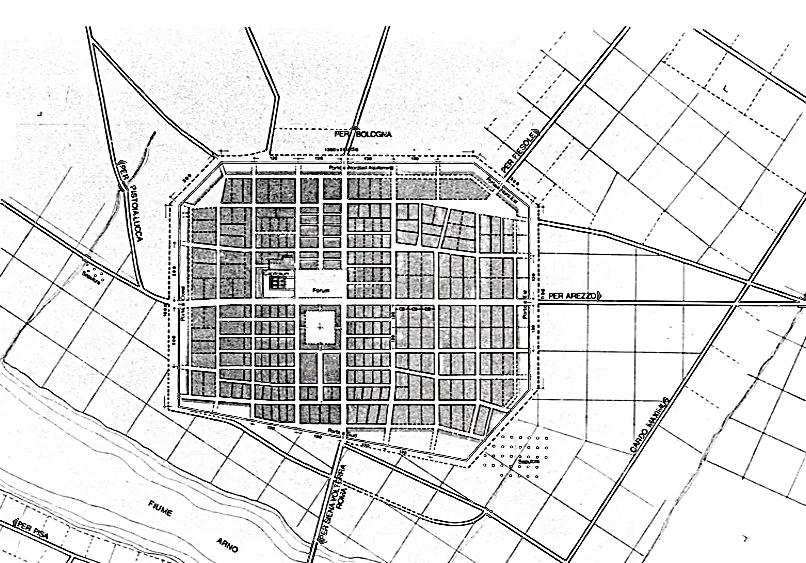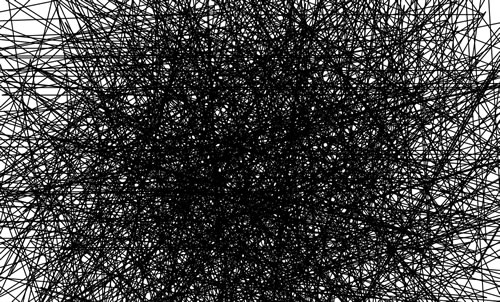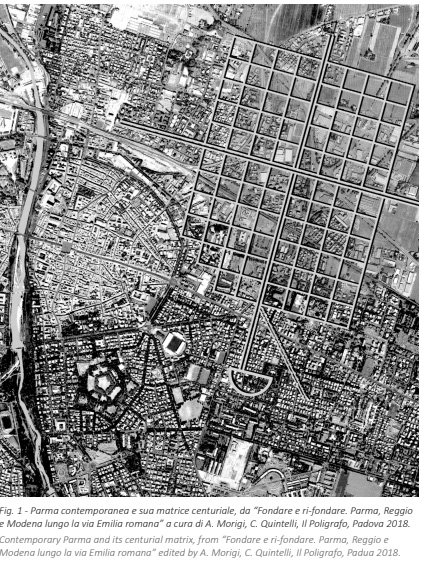KAEBUP INTERNATIONAL SEMINARY
Research, Pedagogy and Design in Urban Morphology.
January 27, 2022, 10.00 – 1.30 pm CET

KAEBUP INTERNATIONAL SEMINARY
Research, Pedagogy and Design in Urban Morphology.
January 27, 2022, 10.00 – 1.30 pm CET


M. Ieva (capogruppo), A. Camporeale, N. Scardigno, G. Volpe, Progetto di concorso internazionale: “New habitats, new beauties. Speculation for Tallin 2019”.

https://tube.switch.ch/videos/yvPjurCptE
Published by

Proviamo a trarre alcune conclusioni, tra le molte possibili, da quanto abbiamo fino ad ora esposto. Conclusioni le quali, contenendo inevitabilmente il senso di una proposta critica, superano, in qualche modo, i limiti del corso, e che tuttavia sono utili, ci sembra, a completare la sistemazione stessa della materia come “organismo” teorico e didattico, a rendere esplicito come le diverse parti non siano solo legate da un rapporto di necessità, ma da un “orientamento”.
Nella costante trasformazione degli organismi edilizi attraverso le infinite revisioni e rinnovi del tipo, l’essenza dell’atto costruttivo, abbiamo visto, rimane costante nel tempo: essa consiste nel gesto fondativo di prendere possesso, orientare e proteggere uno spazio. Eppure questo non basta. Occorre all’uomo, animale politico, che il senso della fondazione sia reso leggibile, diventi gesto comunicabile: ripetuto e convenzionale, quindi simbolico. La geometrizzazione dei gesti di fondazione, ereditati nel corso del tempo dal mondo preriflessivo, annuncia il nuovo edificio stabilendo la posizione del nodo dove il costruttore annoderà, al colmo del tetto, le travi di copertura, l’asse dove la porta indicherà il verso di percorrenza: assegna un centro, stabilisce direzioni, organizza il recinto in modo leggibile. Collega, anche, il nuovo edificio a tutti gli infiniti edifici che lo hanno preceduto, e dei quali quello che sta per iniziare sarà un aggiornamento, un contributo al patrimonio di esperienze che il tipo ha conquistato nel tempo. Ogni atto costruttivo ha senso se partecipa (se è parte) di un processo operante, riassumendo la propria matrice fondativa attraverso il riconoscimento dei gesti tettonici iniziali: ogni costruzione diviene, in questo senso, originale, individuo edilizio capace di “ripossedere” la propria origine.
Nel mondo primitivo e arcaico questo eterno ritorno avveniva attraverso la sacralizzazione del gesto di fondazione, nel mondo antico e premoderno attraverso la ritualizzazione: forme diverse di codificazione riconducibili, tutte, ad un unico principio iterativo, storicamente diversificato, che governa la costruzione.
Abbiamo cercato di dimostrare come, nel mondo moderno e desacralizzato, il riconoscimento delle matrici trasmesse dal tipo costituisca l’ultimo legame possibile, e per questo preziosissimo, tra quanto andiamo costruendo e le nostre radici sulla terra: esso restituisce i riferimenti, le coordinate spazio-temporali. Fornisce l’orientamento. Il carattere sintetico del pensiero arcaico, che si sforza di trasformare il Caos in Cosmos attraverso la ripetizione del tempo mitico delle origini, l’aspirazione all’unità leggibile negli organismi prodotti dalle prime forme di socializzazione delle società preurbane, l’ordine mirabile della città antica, ma anche il bisogno di principi ordinatori (e non regole), latente nel pensiero moderno, possono venire, per questa via, ereditati dal pensiero sistematico contemporaneo, leggendo negli edifici la loro essenza fenomenica, manifestazione di un’esperienza processualmente individuabile e rapportabile al sistema di valori civili che ha prodotto l’universo costruito, come testimonianze operanti di gesti costruttivi concreti. Una razionale cosmogonia, in altri termini, capace di informare la concezione “totale” dell’organismo, dove l’innovazione costituisce l’incipit vita nova fondato non su cataloghi, inventari, elenchi di idee, ma sui pochi gesti elementari eternamente rinnovati che leggono, della realtà, l’essenziale e lo stabile, distinguendolo dal superfluo e dal transeunte delle mode che devastano la nostra disciplina, ma anche dall’accessorio che spesso l’architetto elegge nella storia a pretesto per la spettacolarizzazione dei propri prodotti.
Ci rendiamo conto della inattualità di una tale proposta, in un momento in cui la cultura è occupata a riflettere sull’impossibilità dei procedimenti onnicomprensivi e trovano largo impiego termini quali “microstoria”, “pensiero debole”, “decostruzione”. Eppure, per il progettista, obbligato alla sintesi dall’urgenza delle scelte, la salvezza dalla storia (intuizione latente nel pensiero moderno che i grandi architetti del passato, tuttavia, inconsciamente possedevano) consiste nel togliere le incrostazioni del particolare, che ne oscurano il senso, dai nessi che individuano nel tempo la struttura processuale profonda e operante dei fenomeni; nel cogliere la capacità di rigenerazione degli organismi edilizi ed urbani a partire dalle matrici fondative. Rigenerazione capace di liberarci, auspicabile corollario, tanto dalle letture spesso estetizzanti dei molti critici che hanno contribuito ad immettere la nostra disciplina nel circuito del puro consumo dell’immagine, quanto dalla storiografia intesa come distesa di rovine, museo polveroso e, in fondo, inutile. Inserire il mondo, sempre più autobiografico e privato, del progetto nel circuito della realtà costruita individuando il senso collettivo delle matrici formative dei tipi e del loro processo di trasformazione: sembra essere questo, nelle condizioni di crisi nelle quali versa oggi la disciplina, l’unico modo di superare accademie e fughe nell’universo mercificato dei media. Senza questo legame ogni innovazione è prodotto rivolto al mercato dell’immagine, si esaurisce all’interno dei circuiti del gusto e delle mode. Proviamo a riflettere, al riguardo, su uno dei caratteri più significativi ed evidenti dell’architettura moderna, dilapidato dalla superficialità di un impiego distratto, privo di ragioni strutturali, come l’attenzione all’asimmetria delle forme. Accennavamo, nell’introduzione a queste note, ad un pensiero sistematico che si svolge per diadi, ereditate dalla coscienza spontanea del costruttore arcaico, delle quali vanno riconosciuti tanto i caratteri di opposizione e complementarità, quanto la potenziale integrabilità a costituire sintesi organiche. Un sistema binario dove ogni carattere acquista senso in quanto esiste il suo contrario. Ma abbiamo anche appreso in seguito come, nel mondo illusoriamente simmetrico della diade, un terzo fattore sposti l’asse del problema: in realtà gli opposti termini sono affetti, oltre che dalle qualità di antagonismo e complementarità, da una terza qualità: la polarità, che introduce l’elemento dinamico distinguendo le capacità, “polarizzanti” appunto, di uno dei due termini, immettendo nell’organismo il germe vitale dell’asimmetria.
Il diverso senso, funzionale-simbolico, dei termini duali è legato all’esperienza concreta che appartiene ad ogni aspetto della realtà: il diverso senso convenzionale della mano destra rispetto alla sinistra, del maschile rispetto al femminile, dell’oscurità rispetto alla luce, lo stesso mondo abitato diviso in due dal corso del sole (ogni civiltà ha un suo nord e un suo sud affetti da diversi caratteri allo stesso tempo antagonisti e complementari) così come nello spazio costruito è diverso il senso tra elementi diadici, ad esempio, del percorso: porta, portale, ingresso, soglia, uscio, adito, varco, da una parte, e braciere, camino, abside, altare, trono, mirhab, immagine del dio o del sovrano dall’altra, essendo implicito, nei termini, il valore di strumento polarizzante del primo rispetto al valore di fine polarizzante del secondo. Coinvolgendo un moto e una direzione, la polarizzazione indica la vita dell’edificio, legando la sua geometria al consumo che dell’edificio verrà fatto. “Consumo” e non “uso”, contenendo il primo termine il concetto di esperienza ripetuta nel tempo, che esaurisce o trasforma l’oggetto utilizzato conservandone la memoria dei caratteri tipici. Ma riguardando anche i caratteri degli organismi architettonici nel loro divenire storico-processuale, la polarizzazione della diade fornisce senso (verso, orientamento) anche a sequenze di mutazioni (abbiamo esemplificato alcune delle più semplici nel passaggio dal recinto alla copertura, dalla serie al nodo, dal frammentario all’organico) ciclicamente ricorrenti. L’organismo edilizio è dunque il risultato di un equilibrio dinamico prodotto da termini polarizzanti che impediscono lo stato di pura quiete attraverso l’asimmetrica gerarchizzazione degli elementi binari. L’edificio costruito coglie, nel tempo e nello spazio, uno di questi provvisori stati di equilibrio, divenendo esso stesso luogo di nuove, possibili forme di stabilità attraverso mutazioni, trasformazioni, reimpieghi. La regolarità che il pensiero sistematico induce negli organismi edilizi non è, dunque, l’asettica perfezione geometrica del cristallo, di simmetrica astrazione: abbiamo visto come, ad esempio, nel processo di trasformazione dei tipi, l’impianto perfettamente centrale costituisca pura ricerca intellettuale slegata dalla realtà fenomenica delle trasformazioni edilizie. Il mondo costruito rispecchia la complessità della vita, dei percorsi, del moto: esso presenta versi e discontinuità nella distribuzione, nell’apparecchio statico-costruttivo, nell’aspetto visibile, nel modo stesso di organizzare (di trasformare in organismo) questi sistemi in sintesi leggibile.
Ebbene, se una delle conquiste della modernità consiste proprio nel riconoscimento di questa sostanziale discontinuità ed asimmetria nell’universo, l’architettura moderna, soprattutto nelle versioni volgarizzate dagli epigoni dei “pionieri”, ha dato a questo riconoscimento, sulla scia delle arti figurative, una traduzione pittoresca e imitativa senza riconoscerne, in sostanza, la struttura di caratteri processualmente costanti: il senso strutturante dell’opposizione, della complementarità, della polarizzazione. L’asimmetria è così divenuta, per questa strada dalle origini complesse eppure semplicissima da riconoscere, carattere distintivo portatore di valori autonomi, assoluti, propiziatori di modernità: vero esorcismo dell’architettura del XX secolo.
Ma noi non avalleremo, in coerenza con le considerazioni fin qui riportate, un’interpretazione dell’architettura moderna come collettiva, catastrofica dissoluzione. Se intendiamo la civiltà, ogni civiltà, e quindi anche quella contemporanea, come manifestazione concreta e prodotto organico di una società, e dunque essa stessa organismo in continua trasformazione, la modernità ci appare come fase critica di uno svolgimento che si rinnova ciclicamente. Il fatto stesso che l’architettura moderna si sia storicizzata contraddicendo i propri stessi manifesti, che abbia riconosciuto al suo interno fasi e processi e ne abbia preso coscienza, è il sintomo evidente di come nulla di quello che l’uomo ha costruito possa essere veramente distrutto. E la constatazione che noi non abbiamo ereditato un pugno di cenere è perfino più importante dell’ambiguità del lascito. Anzi, permette di comporre, superandola, quella stessa ambiguità.
Torniamo alla capanna primitiva.
Ciclicamente la trattatistica ha utilizzato questo tema per i propri fini: dimostrare una chiave di lettura, surrogare una teoria, affermare un principio. L’interpretazione della capanna primitiva corrisponde, in ultima analisi, al desiderio di un solo, unico principio unitario, capace di spiegare la totalità dei fenomeni. Essa esprime la nostalgia dell’età dell’oro: della visione mitica, unitaria e convenzionale del mondo propria delle civiltà allo stato aurorale, quando uomo, natura e cosmo erano realtà inscindibili e la capanna costituiva, appunto, essa stessa una cosmogonia.
Non volendo essere innovatori, volendo anzi seguire pedissequamente le orme di quanti ci hanno preceduto, utilizzeremo anche noi la metafora della capanna primitiva per fornire una spiegazione convenzionale e una chiave di lettura sintetica di quanto abbiamo esposto fino ad ora. Accettando consapevolmente, s’intende, la sostanza critica insita in ogni metafora, e non potendo evitare di considerare il problema in termini scientificamente verificabili, con gli occhi di chi vive immerso in un mondo analitico, e che della visione intuitivamente onnicomprensiva delle cose non può non diffidare come retaggio di tempi meno incerti, ma anche più oscuri, di quelli attuali. Utilizzeremo la capanna allo stesso modo nel quale, nell’organizzare l’esposizione che stiamo concludendo, abbiamo preferito utilizzare dati concreti, gli edifici (siamo partiti dal fenomeno per arrivare alla lettura generale del problema), cercando di individuarne i principi formativi attraverso il confronto dei loro caratteri, piuttosto che definire a priori principi generali dai quali dedurre descrizione e interpretazione di problemi particolari. Una fondamentale differenza tra casa e capanna, tra cultura moderna e culture arcaiche, consiste nella concezione del tempo: noi pensiamo ad un tempo storico, ad una successione di periodi temporali che possono essere perimetrati, delimitati e racchiusi in una sequenza logica interpretabile. Nella visione dell’uomo primitivo o arcaico il tempo era continuo: al contrario dell’idea di storia come svolgimento ininterrotto di eventi, il riferimento di ogni suo atto, e quindi anche di ogni atto costruttivo, non era agli avvenimenti che si succedevano, ma a un’origine prima delle cose, a un atto generativo di partenza che doveva essere costantemente ripetuto. In base alle definizioni che abbiamo dato, questa constatazione riveste un interesse interpretativo fondamentale, perché indica nelle matrici elementari la presenza della manifestazione non solo più sintetica (unità assoluta nella concezione dell’organismo edilizio) ma anche più tipizzata e stabile delle forme costruite.
La modernità ha interrotto questo rapporto intenso con l’origine (non solo edilizia) delle cose, introducendo strumenti di interpretazione logico-analitici che hanno frantumato l’unità intuitivo-sintetica della conoscenza. Interpretazione, si badi, anch’essa storicamente necessaria, che non può essere semplicisticamente respinta cogliendo aspetti parziali di trasformazioni generali, ma che deve essere letta criticamente come momento dialetticamente necessario di un processo in atto. L’interesse, dunque, dello studio delle forme edilizie elementari ed originali, sviluppatesi secondo iterazioni divenute anche principi geometrici, non è per noi legato ad analisi di carattere storico e tanto meno etnografico o antropologico: esse riportano un’idea di spazio strutturatasi attraverso l’uso polarizzante del sistema binario (il diverso valore dell’alto rispetto al basso, del davanti rispetto al dietro, del verticale rispetto all’orizzontale) i cui principi hanno validità generale. Se il principio costruttivo dell’uomo primitivo era dunque quello della ripetizione (essendo rituale e stabile l’interpretazione dello spazio abitato, la nozione arcaica di tipo non contempla alcuna idea di progresso), l’uomo storico fonda la sua nozione di tipo sull’esperienza, dove la coscienza delle scelte acquista nel tempo valore crescente, procedendo per accumulazioni, dimostrate dalla progressiva complessità delle strutture architettoniche al termine delle diverse fasi storiche, fino al ciclico esaurimento dei principi che avevano generato le forme iniziali ed alla necessaria rigenerazione. La storia dell’architettura è, per questo, il portato vincolante di una lettura continua di esperienze acquisite, di antecedenti che condizionano l’operare: questo spiega il desiderio dell’uomo storico di liberarsi ciclicamente del fardello della storia che lo appesantisce, di ricercare il nuovo pur sapendo che, a rigore, il nuovo non esiste, che ogni edificio è sempre la conseguenza della lettura di una rilettura, fino ad arrivare alle matrici, alle forme aurorali. Periodicamente, dunque, ogni civiltà prova il bisogno di ricostruire le proprie forme originali: è il mito dell’eterno ritorno che attraversa la storia dell’architettura da quando il costruttore ha preso coscienza della propria storicità e, per quello che ci riguarda, della sostanza critica del lavoro dell’architetto nella società moderna. Un mito che continua a svolgersi nel cuore della modernità. Loos ha espresso in termini molto semplici e chiari il senso liberatorio delle forme originali, la loro necessità: l’architetto, buono o cattivo, costruendo una casa sul lago, finisce per deturparlo, il contadino no. Perché avviene questo? Semplicemente perché la coscienza spontanea del contadino “continua” la costruzione del paesaggio, compie gesti che già sono stati fatti. Il tetto che egli costruisce è parte costituente di una struttura più generale, di un mondo ordinato che si va trasformando e consolidando. “Un tetto bello o brutto?” si chiede Loos senza darsi risposta: semplicemente “Il tetto”1: la costruzione della copertura è legata ad una tradizione che libera dal problema della scelta del tipo e riuscirà certamente bene “come riesce ad ogni animale che si lascia guidare dal suo istinto”2.
Non si tratta, si badi, del mito del “buon selvaggio”, così come non è possibile ricostruire una “coscienza spontanea moderna”, ma di riconoscere il senso operante di nessi e legami. Perfino Le Corbusier, massimo tra i fautori dell’innovazione continua, nel parlare di ordine ritorna al tempo mitico in cui la casa è stata fondata per la prima volta attraverso i gesti elementari della costruzione della copertura-capanna (rappresentata da una tenda) e del recinto costituito da una palizzata. La nozione di spazio abitato non si evolve, è la stessa per la casa arcaica come per il tempio: “Non c’è l’uomo primitivo; ci sono mezzi primitivi. L’idea è costante, in potenza fin dall’inizio”3. Perfino Giedion, pur nel consueto parallelo con le arti figurative, riconosce il legame necessario dell’innovazione con l’origine primitiva delle forme: “Come la pittura e la scultura, essa (l’architettura contemporanea) deve ricominciare da capo. Deve riconquistare le cose più primitive, come se niente fosse stato mai fatto prima”4. A parte l’equivoco, palese e persistente, di voler legare con un filo continuo la prima casa prodotta dall’uomo all’ultima casa prodotta dalla macchina, le osservazioni di Loos, Le Corbusier, Giedion (ma si potrebbero citare anche Gropius, Pagano, Mercadal, Wachsmann, e tanti altri protagonisti dell’avventura moderna) fanno riflettere sulla durata dei miti di rifondazione, sulla loro incidenza nella formazione di molte teorie del moderno, costituendone spesso la faccia nascosta: il desiderio di tornare periodicamente all’origine delle cose al di là della storia, dare senso e giustificare la propria condizione riproducendo i gesti compiuti all’origine, è una delle caratteristiche dell’uomo civilizzato. L’uomo storico tende continuamente a rifondare il sistema di convenzioni in uso cercando di abolire il tempo passato, riproponendo come attuale la cosmogonia delle origini. Un sistema convenzionale che è anche, ma non solo, architettonico: si pensi al sabato giudaico-cristiano come riposo, interruzione e nuovo inizio, ai riti del Capodanno, diffusissimi in ogni parte del mondo civilizzato. L’uomo arcaico non aveva bisogno di scoprire di continuo la necessità delle rigenerazioni: quello che compiva con ogni gesto costruttivo era la riproposizione dell’atto fondativo, del momento mitico nel quale le forme tettoniche originarie erano state rivelate: ogni costruzione era assoluto ab initio che riproponeva l’istante iniziale depurato di ogni traccia di storia attraverso i simboli del centro, dell’asse verticale, dell’incrocio, del cerchio. Tutte le religioni arcaiche prevedono che la creazione nasca dal centro, legato all’ombelico del mondo. L’atto costruttivo è la creazione che si diparte da un centro, tanto da assumere forma di atto rituale, prevedendo ogni volta una nuova fondazione.
Così l’idea che l’uomo primitivo aveva della propria capanna era in qualche modo cosmogonia (come rappresentazione dell’ordine delle cose) e cosmologia (come spiegazione dell’ordine dell’Universo). Il centro è l’intersezione dove l’asse del mondo (simbolizzato, nei miti delle diverse civiltà arcaiche, dalla Montagna Cosmica che unisce cielo, terra, inferi, dal Pilastro centrale che sostiene i livelli cosmici, dall’Albero del Mondo) interseca la terra in un punto. Può sorprendere il pensiero logico che non esista, per l’homo religiosus delle società tradizionali, un solo centro del mondo e che per la costruzione di ogni nuovo edificio venga individuato un nuovo centro, ma l’uomo arcaico cerca costantemente il rapporto tra il particolare e la totalità, la coesione dell’universo attraverso la ripetizione delle stesse nozioni ad ogni possibile scala. In corrispondenza del centro, l’asse polare, l’Axis mundi, in origine leggibile in senso fisico attraverso il palo centrale, indica la posizione del nodo che lega l’edificio, ereditato in forma stabile nella memoria collettiva dei costruttori. L’intersezione degli assi orizzontali corrisponde all’orientamento, a partire dall’ingresso, individuando l’asse di percorribilità, e permettendo di distinguere le parti dello spazio, la destra e la sinistra di chi entra. L’altro carattere che permane nella storia dell’architettura è legato all’idea di perimetro espresso dalla forma immediata del cerchio. La nozione di centro e di circonferenza perimetrale era un dato permanente nella mente del costruttore perché legato all’atto fisico del costruire: il cerchio veniva tracciato a partire dal centro piantando un picchetto, costruendo con un compasso rudimentale costituito da una corda la circonferenza. Questa struttura elementare legata alla sequenza costruttiva dell’edificio è dunque costituita da assi, nodi, poli, il cui senso non è astratto ma concretamente costruttivo. Essa permane fino ai nostri giorni come dato strutturante qualsiasi spazio processualmente prodotto dall’uomo, palese negli organismi tradizionali, ma anche latente nelle opere più autenticamente moderne, purché si sappia riconoscerla.
La forma circolare della capanna elementare indica, in maniera simbolica, l’unità isolata dell’abitazione, la sua non aggregabilità: ogni capanna è un microcosmo autonomo, tendenzialmente incapace di produrre tessuto (si veda lo scarso rendimento dei tessuti ottenuti da matrici monocellulari circolari nei villaggi arcaici in Asia occidentale, ma anche nei villaggi nuragici in Sardegna, come Barumini, e negli stessi aggregati di trulli a pianta circolare in Puglia): un’interpretazione della costruzione come elemento autonomamente organico, unitario in senso totale. Ma, nel momento in cui l’unità abitativa si dispone, da organismo autonomo, a formare organismi di scala maggiore, aggregazioni di unità abitative, la forma circolare si trasforma, fase fondamentale di passaggio, in quadrilatera, originando la cellula elementare che tramanderà la scala umana agli organismi più complessi. Se la tenda appartiene al ciclo della pastorizia e della raccolta, e la capanna al ciclo agrario, la cellula elementare aggregabile appartiene al ciclo successivo: all’uomo sociale, che edifica la città secondo un ordine più complesso. La quale mantiene, tuttavia, la stessa idea di necessità nei rapporti tra le parti degli organismi edilizi più semplici: dalla forma elementare abitativa preriflessiva viene ereditata la fondamentale qualità genetica di “ricapitolazione” del sistema naturale di orientamento che, derivato dal bisogno dell’uomo di leggere e riprodurre l’ordine cosmico, ha valore a tutte le scale del costruito: la città antica come la domus elementare, la basilica come il foro, hanno anch’essi, come abbiamo cercato di dimostrare, il loro ordine binario di termini antagonisti e complementari, costituito da nodi e antinodi, assi di percorrenza accentranti e linee periferiche dividenti, all’interno dei quali la polarizzazione dei termini della diade introduce l’elemento dinamico, il verso, la direzione, l’orientamento. Questa eredità di pochissimi, fondamentali gesti, legata processualmente all’uso antropico del territorio, è ancora potenzialmente operante, sepolta sotto le incrostazioni che almeno mezzo secolo di smarrimento ha depositato sulla coscienza dei costruttori, e ancora capace di rigenerazione, di dare origine ad un nuovo umanesimo.
Nei caratteri degli edifici strutturati secondo una concezione dell’organismo ereditata dalle matrici del pensiero architettonico, dalla riflessione allo stato aurorale sul senso degli elementi e della loro aggregazione, può dunque anche essere letta, al di fuori di ogni interpretazione nostalgica e in un mondo inevitabilmente desacralizzato, la palingenesi che qualsiasi trasformazione vitale contiene, inizio e ultima permanenza potenzialmente ancora operante di una concezione sintetica ed unitaria del mondo, persa nei frammenti specializzati del pensiero moderno. Il poter risalire alle matrici formative dell’universo abitato attraverso il processo di modificazione che ne individua le tracce, il riconoscere la sostanziale, persistente organicità della realtà costruita che ci circonda, diviene così uno dei rari strumenti di continuità rimasti all’uomo moderno immerso in un mondo in cui nessuna continuità è più assicurata dall’atto che ripete gelosamente gesti tramandati.
Se il costruire è da sempre l’atto vitale (e non a caso in tutte le civiltà arcaiche ricorre la percezione che la costruzione possieda un’anima) capace di testimoniare il radicamento dell’uomo sulla terra, il suo operante senso processuale assume valore ancora più centrale, se possibile, nel cuore della tarda modernità, dove rappresenta l’ultimo riferimento stabile nel vortice di un universo precario e inabitabile “dove tutto quello che è solido si dissolve nell’aria”. Non si tratta, in altre parole, come vorrebbe certa letteratura nostalgica, di raccogliere e amplificare un’eco lontana attualizzando forme distanti nello spazio e nel tempo, ma di riconoscere le strutture profonde che sono ancora in grado di informare e rifondare gli edifici prodotti dai costruttori di fine millennio. Una storia operante, dunque, ma nell’accezione vasta del termine. Non una storia in perenne progresso che procede per gesti esemplari, sotto l’impulso salvatico di personalità creatrici, che avanza per opposizioni, paradossi folgoranti, innovazioni continue e radicali. La storiografia che ha proposto questa lettura delle cose, pur volendo essere dissacrante e innovativa, ha finito per essere conservatrice nel modo peggiore: riconoscendo puntualmente all’Unicità, all’Irripetibilità, alla Distanza il valore auratico che deve informare l’opera d’arte (assegnando, in fondo, alla storia il ruolo dogmaticamente didattico che le assegna qualsiasi ideologia della conservazione). Ma una storia come “processualità corale” basata sull’evidenza, sulla concretezza, sulla continuità del mondo costruito capace di strappare, per usare un’espressione cara a Pierpaolo Pasolini, ai conservatori il patrimonio della tradizione.
————————————————————–
3.Le Corbusier,Vers une Architecture, Paris 1923; trad. it.: Verso un’architettura, Milano 1986, pag. 53
in U+D Urbanform and Design n. 15 – 2021 (Italian and English text)
The tool of morphological analysis for architectural and urban composition should lead us to critically re-consider the contributions of Italian Schools which have used such a tool in different ways but with a common scientific intention: that of a general critical revision and epistemological re-foundation of the design culture. A revision that cannot fail to involve the thematic node of the relationship between architecture and city despite its phenomenological actualization, the question of typology as a non-univocal but essential component of morphological characterization, and the functional datum in the interpretative key of a physiology of urban and territorial contexts capable of guiding the design choice.
Thus contrasting a kind of temperance design on a cognitive basis to that of an architecture dictated by the functionalism of communication.
https://drive.google.com/file/d/1po9mICvcKphGBED3750sCBecwLi0Pe23/view?usp=sharing
